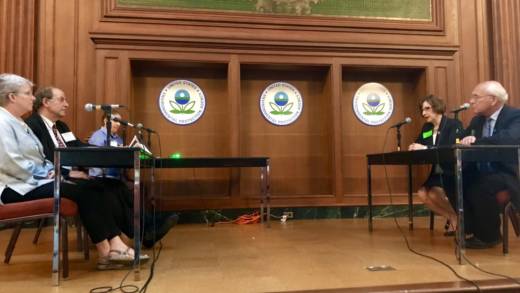Critics at a public hearing Tuesday sounded off on the Environmental Protection Agency’s plans to limit the use of scientific research in drafting new regulations.
Opponents of the draft rule — who ranged from congressmen, former health officials and scientists — voiced their concerns at the agency’s Washington, D.C. headquarters this morning at a hearing that’s expected to last all day.
Critics urged EPA officials not to adopt a measure that they say would jeopardize the health and safety of Americans by excluding critical research that can lead to stronger environmental protections. Those expressing their concerns Tuesday include Gretchen Goldman, the research director at the Center for Science and Democracy.
I can’t always protect my kids from unsafe air outside, but the EPA can. That’s why the agency should withdraw this proposal. You can submit your own comments here: https://t.co/bRc4t7LrGA pic.twitter.com/6duv4cklrd
— Dr Gretchen Goldman (@GretchenTG) July 17, 2018
Unveiled in April, the draft rule — “Strengthening Transparency in Regulatory Science” — would bar the EPA from considering scientific studies that “are not publicly available in a manner sufficient for independent validation,” according to the text.
Attacking science under the guise of transparency would have chilling consequences for the EPA and every person who benefits from clean air and water. Today I testified in person against this insidious proposed rule. #ScienceNotSilence https://t.co/c78SIzcFqV pic.twitter.com/RZYN7dLH1X
— Suzanne Bonamici (@RepBonamici) July 17, 2018
At the time it was revealed, former EPA chief Scott Pruitt said it would make the agency’s decision-making more transparent. But critics like Jennifer McPartland, a senior scientist with the Environmental Defense Fund, say the rule is a disguised attempt to bar consideration of research that could lead to tighter regulations.

